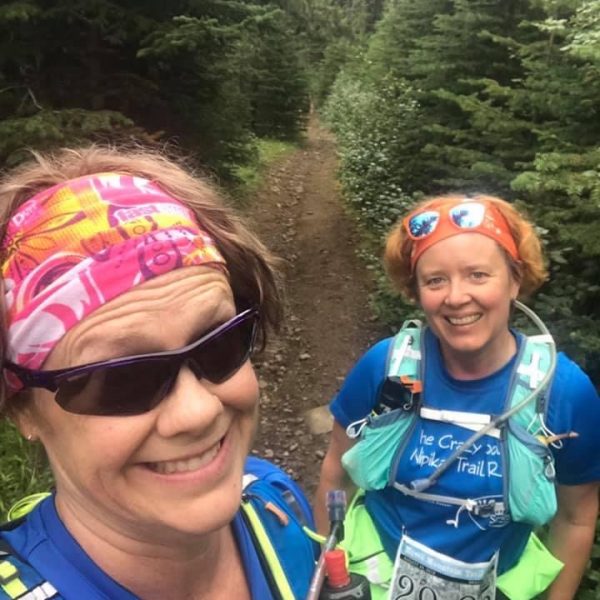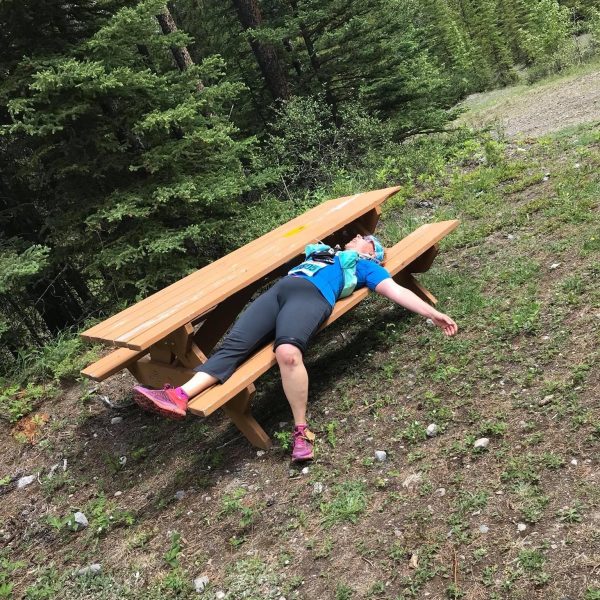Up your Game: Trail Running 101
Trail Etiquette and Safety
- Make sure you know the types of users allowed on the trails you want to use; yield the right of way to bikers and equestrians. Take your own personal safety upon yourself and pay attention to who might be coming up on the trail.
- If you want to get around someone ahead of you, call out “on your left” as you approach and then pass them on their left when it’s safe to do so without forcing them over into unsafe terrain.
- Never run on trail with headphones in. Be aware of your surroundings. There could be a downhill biker coming behind you or someone trying to pass you. If you must have music only use one headphone at a low volume or play music over your phones speaker.
- On longer runs make sure you have an extra layer or emergency blanket, food and water, a headlamp or flashlight and a means of communication.

The Trail Etiquette and Safety Top 3
1
Always "Leave no Trace". Pack out anything you pack in, run only on designated trails, take nothing but pictures, leave nothing but footprints
2
Always make sure someone knows where you plan on running and for how long you will be gone. It's important to have a backup for your own safety. Know the conditions of the terrain and the weather before you go so you can make sure you are prepared with the appropriate gear.
3
Carry wildlife deterrent. Whether a bear bell, a noise maker, bear spray or bear bangers or all four! Be sure you know how to use bear spray or bear bangers safely.

Technical Running
- On trail you will encounter smooth “buffed out” sections, but you will also encounter “technical” terrain. Technical terrain is rougher; rocks and roots, loose ground, steep inclines.
- Slow down and watch your footing. Technical terrain takes practice to run well. Even the pros fall down and trip on technical terrain. Focus on picking your feet up and watch the ground ahead of you so you can plan your next steps.
- Practice “quick feet” on loose ground or steep downhills, focus on a fast foot turnover to keep yourself from slipping and sliding.
When in doubt: walk. It’s better to have a slower time then to need rescue from the trail.
Gear
- Two words: Trail Shoes. Trail shoes are made to grip on soft ground, over wet roots and rocks and will make a huge difference on your traction and safety.
- If you plan on running into the winter, shoes with built in carbide spikes or external traction aids are a necessity.
- Running packs or vests become necessary on longer runs or for runs that are more remote or take place in inclement weather. They are designed not to bounce while running but give you the space to carry food, water and safety gear.
- Poles. Hiking poles are a staple item in mountain and long distance runners kits. They can provide extra traction and stability, as well engage your upper body during longer efforts.
- Headlamps. A good headlamp is essential for anyone who may end up on the trails at dusk.


Trail racing tips from 5km to the Ultra distance of 100 miles
- Know the terrain of the race you want to run and train on similar terrain. This is the best way to prepare you for race day.
- Add some hill workouts into your training to get your body used to a hard uphill push and to get your recovery time afterwards down.
- Dress for the weather. Light layers in winter and sun protection in the summer time.
- Have a nutrition and hydration strategy that works for you. Practice this on your long training runs. Nothing new on race day.
- For longer races, practice running while tired. Back to back long runs in your training will help with this.
- Enjoy yourself. Enjoy the camaraderie of trail races. Make friends. Smile. Take pictures.

